L’arte ricondotta alla sua essenza primaria di purezza e verità senza tempo, che tende all’eterno in una sintesi affidata alla profondità di senso del colore. I colori però non sono usati per dipingere, non ricoprono qualcosa, ma sono essi stessi materia la cui forza plastica si espande a invadere l’atmosfera: una materia sofisticata e duttile, plasmata con la padronanza dell’alchimista. Gli azzurri, i rosa, i grigi, «ospitano» l’osservatore che vi si immerge, in una temporalità circolare che non rimanda al reale ma racchiude in sé passato, presente e futuro. È questo l’austero e monumentale mondo di Ettore Spalletti, il più spirituale dei grandi artisti italiani, la cui poetica è fortemente intrisa di un rigore concettuale quasi ascetico. Scomparso nell’ottobre scorso a 79 anni, Spalletti – consacrato da due Documenta di Kassel, quattro Biennali di Venezia, esposizioni nei maggiori musei del mondo e da una spettacolare mostra che nel 2014 lo ha visto protagonista in contemporanea al Maxxi di Roma, alla Gam di Torino e al Madre di Napoli – era un artista distante da riti e miti dello star system, percepito dai più come un asceta, che mai aveva reciso il suo legame con l’Abruzzo delle origini, e che faceva del silenzio la sua cifra poetica: nelle sue opere i colori si incarnano nello spazio e si fondono con le forme in una sintesi emozionale che diviene linguaggio. Ma è un codice di comunicazione muto, fatto di immagini nascoste nella memoria, che assorbe e azzera il rumore contemporaneo restituendo superfici lisce, ripiani morbidi di azzurri perlacei, pastosi rosa pallido, gialli lievi e sfuggenti, bianchi che dall’ombra s’impongono intensi fino a calcare nel profondo la materialità della scultura. E poi angoli smussati e dorsi resi concavi dall’inattesa luce di una foglia d’oro che si rifrange in un lampo di tridimensionalità, come se la superficie piana fosse viva, respirasse. Sono opere che hanno radici nell’astrattismo concettuale dell’arte minimalista, contaminato però dall’incessante dialogo intimo che l’artista aveva con se stesso. Mentre la forza poetica si contende lo spazio con la seduzione estetica.
«Il rosa è il colore dell’incarnato, dei visi, cambia a secondo della luce o dell’umore. Il grigio è quello dell’accoglienza, prende in sé gli altri colori, non toglie ma dà: è un colore generoso. Le apparizioni dell’oro sono la memoria della storia dell’arte italiana, penso a Duccio, a Simone Martini, ai pittori del Trecento», raccontava in un’intervista alla vigilia di una delle sue mostre napoletane. E continuava spiegando quanto il colore fosse centrale per lui, più ancora delle forme a volte spaziali, di
dischi sospesi a fluttuare nel vuoto, o classiche a echeggiare colonne, architravi, in un continuo raffrontarsi con le architetture. «L’azzurro è il cielo e il mare: si muove tutto il giorno, riflette le intensità della luce, illividisce al tramonto. Ci è sempre intorno, è un colore dentro il quale viviamo. Il bianco invece non è mai contaminato da altro ed è molto potente: è fondamentale in tutti i miei lavori». In un’atmosfera di tempo sospeso, su tutto aleggia un’aura di silenzio che imprime un sentimento religioso, mistico: «Non mi interrogo più di tanto, le grandi strategie del pensiero soffocano il vero senso dell’arte. Le opere hanno il loro carattere, la spiritualità è dentro di loro», diceva.
Spalletti era toccato dalla grazia. E privilegiava la scultura senza abbandonare mai lo sguardo del pittore. La sua era la creazione di raffinati oggetti poetici chiusi in se stessi, aperti però a tensioni narrative conservando la non comune eleganza del gesto, secondo un’idea guida di fondo che non potrebbe che essere quella di autentico poeta: il reale non è come appare, ma è il risultato della visione di chi crea e chi guarda. Opere perfette, ma proiezione dell’irregolarità del mondo; aperture vertiginose verso l’ignoto, riflesso di esperienze lontane, combinazioni lessicali proprie di chi vuol mostrare ciò che sfugge, ciò che manca, che non
si risolve.
Per fare arte, e lo stesso vale anche per la letteratura, bisogna distruggere il verosimile. E per Spalletti l’arte era anche l’incarnazione di un’assenza, un vuoto, una negazione, una mancanza. Qualcosa che non esiste ma che possiede un suo centro, come un immenso spazio gravitazionale che calamita il nostro io e le nostre emozioni. Le sue sculture sono artificio, movimento verso l’insondabile, epifanie del negativo con cui toccare il cuore segreto di chi guarda e su cui far convergere concupiscenza. Eppure è un’arte fuori dall’ombra, calata nella luce, un’immensa ipotesi inedita di luce che contiene la dimensione metafisica. Spalletti era ubiquo e multiforme, e sebbene mostrasse il suo essere schivo, riservato e a tratti cupo, era nutrito del sorriso della fiaba, della dimensione onirica della narrazione di una realtà a metà tra “Le mille e una notte” e “Alice nel paese delle meraviglie”.
La sua è una forza dirompente sia nel rigore che nella dolcezza che nell’inesorabile malinconia, e sa proiettarci in orizzonti metafisici oltre che sperimentali dal punto di vista estetico. La sua scultura, incredibilmente molto prossima al disegno, continua a manifestarsi, per poter prendere corpo, seguendo un canone antico, in qualche modo consacrato.
Art led back to its primary essence of timeless purity and truth, tending to the external in a synthesis entrusted to the deep meaning of color. Colors, however, are not used for painting, they don’t cover something, but are matter itself, whose plastic strength expands and invades the atmosphere: a sophisticated and flexible matter, shaped following the mastery of the alchemist. Shades of light blue, pink, gray, they “host” the observers who lose themselves in them, in a circular temporality that does not reference reality but embodies past, present and future. This is the austere and monumental world of Ettore Spalletti, the most spiritual of the great Italian artists, whose poetic is strongly imbued with a conceptual, almost ascetic, severity. Passed away last October at the age of 79, Spalletti – honoured by two Kassel Documenta, four Venice Biennales, exhibitions in the most important museums in the world and a spectacular exhibition that in 2014 saw him participate simultaneously the Maxxi in Rome, the Gam in Turin and the Madre in Naples – was an artist who eschewed the rites and legends of the star system, being perceived by most as an ascetic who had never severed his relationship with Abruzzo, his birthplace, and who made silence his poetic signature: in his works, colors acquire substance in space and they fuse with forms in a emotional synthesis that becomes language. It is a mute code of communication, made up of images hidden inside memory, that absorbs and nullifies the contemporary noise, returning smooth surfaces, soft ledges of pearly light-blue, pasty pale pink, delicate and fleeting yellow, intense whites that stand out from the shadow to deeply stress the materiality of the sculpture. And then, rounded corners and backsides made concave by the unexpected light of a golden leaf that refracts in a lighting of three-dimensionality, as if the flat surface was alive, breathing. These works have their roots in the conceptual abstractionism of minimalist art, contaminated, however, by the incessant intimate dialogue that the artist had with himself. At the same time, poetic strength competed for space with aesthetic seduction.
“Rose is the colour of facial tones and changes according to the light and one’s humour. Gray is the color of hospitality, it gathers the other colors, it doesn’t take, it gives: a generous color. The apparition of gold is the memory of Italian Art History, I am thinking of Duccio, Simone Martini, the painters of the fourteenth century” he said in an interview on the eve of one of his Neapolitan exhibitions. He went on, explaining how central color was for him, even more than the, at times spatial, shapes of discs suspended, fluctuating in the void, or classic shapes echoing columns, architraves, in a continuous comparison with architectures. “Light blue is the sea and the sky: it moves all day long, it reflect the intensity of light, it turns blue at sunset. It is always around us; we live inside this color. White, instead, is never contaminated and is very powerful: it is fundamental in all my works”. In an atmosphere of suspended time, an aura of silence lingers over everything, communicating a religious, mystic feeling: “I never question myself too much, the great strategies of thought suffocate the true meaning of art. The pieces have their character, spirituality is inside them”, he said.
Spalletti was touched by grace. And he favoured sculpture without ever abandoning the gaze of the painter. His was a creation of refined poetic objects, closed in on themselves, but open to narrative tensions preserving the uncommon elegance of gesture, following the basic idea that can only be that of the true poet: reality is not how it appears, it is the result of the vision of the creator and the observer. Perfect works, at the same time projections of the irregularity of the world: frenetic openings into the unknown, reflection of past experiences, the lexical combinations of an artist who wants to show that which is fleeting, missing, unsolvable. To make art, and the same thing applies for literature as well, you must destroy the plausible. And for Spalletti art was also the embodiment of an essence, a void, a negation, an absence. Something that does not exist but that has its own center, like an immense gravitational space attracting our self and our emotions. His sculptures are artifice, a movement towards the unfathomable, epiphanies of the negative through which he can touch the secret heart of the beholder and on whom he causes concupiscence to converge. And yet, it is an art outside of the shadow, cast in light, an immense new hypothesis of light containing the metaphysical dimension. Spalletti was ubiquitous and multiform, and although he showed his shy, reserved and, at times gloomy attitude, he was nourished by the smile of the fairy tale, by the dreamlike dimension of the narration of a reality midway between “One Thousand and One Nights” and “Alice in Wonderland”. His disruptive strength, in strictness, sweetness and unrelenting melancholy, can lead us to metaphysical and aesthetically experimental horizons. His sculpture, incredibly close to drawing, continues to manifest itself, to take shape, following an ancient, somewhat consecrated, canon.


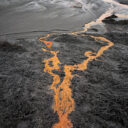
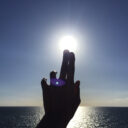

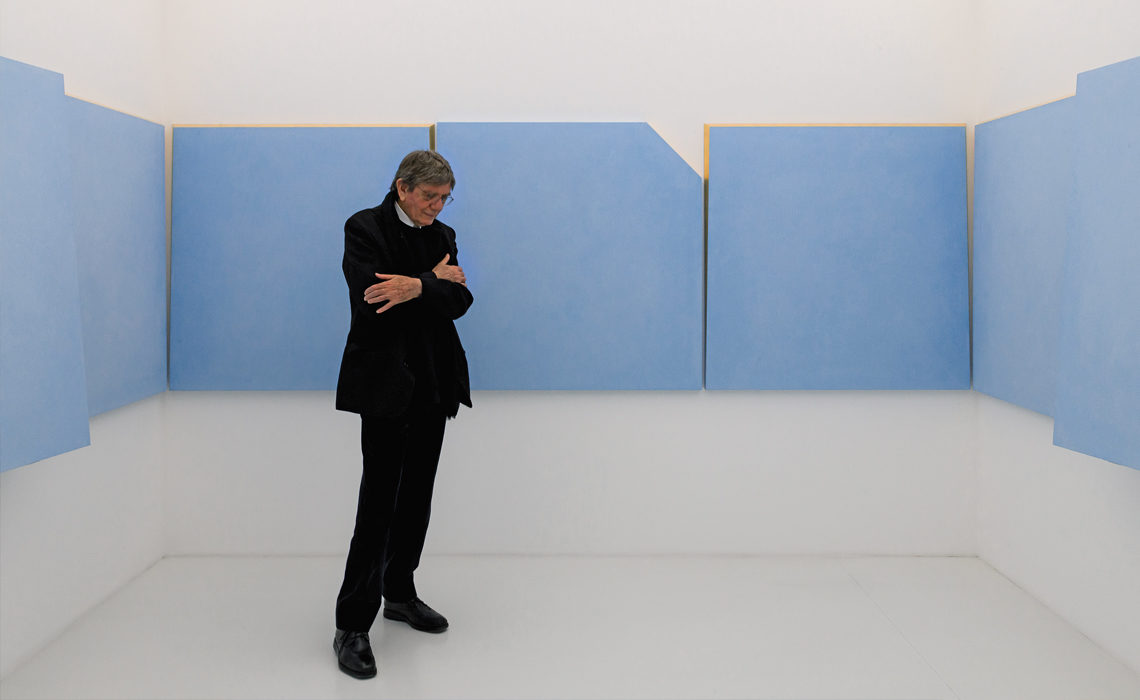
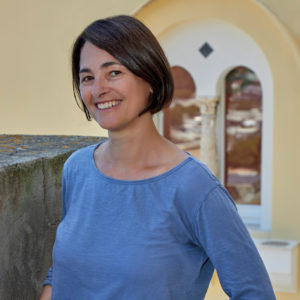
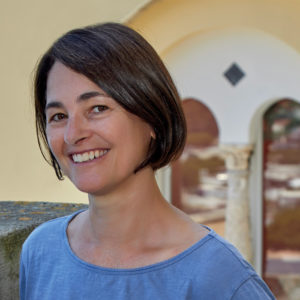
No Comments